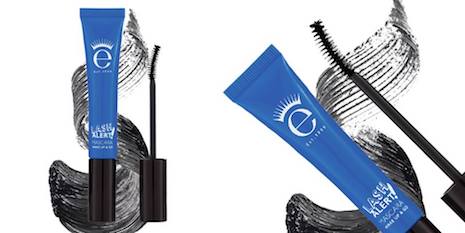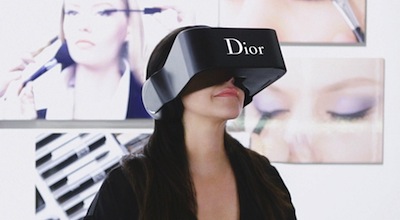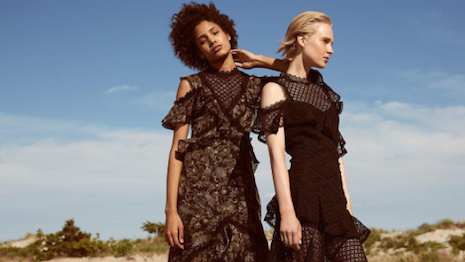Consumers are adjusting their perspective on ownership, leading to the rise of alternatives to traditional purchasing in the fashion and beauty categories.
The convergence of consumers’ thriftiness and desire for sustainability is creating new models for consumption, such as rentals and secondhand marketplaces. In a webinar from Euromonitor, titled "The New Consumerism: Impact on Beauty and Fashion Industries, "two of the research firm’s analysts pointed out that brands in these categories need to regroup and deliver experiences and products that consumers are willing to pay for to remain competitive.
"There is a competition for an increasingly shrinking share of wallet for fashion products, especially with younger consumers who’ve come of age in the great recession and have really embraced thrift," said Michelle Grant, head of retailing research at Euromonitor, Chicago.
"I do think that when looking at the competitive landscape, everyone does need to take into account these secondhand Web sites."
Owning it
One of the biggest factors impacting both apparel and accessories and beauty consumption is the circular economy. Rather than the former lifespan of a garment or cosmetic, in which the consumer bought a new item from the brand itself or a retailer and then disposed of it, today’s products are taken on a less wasteful path.
With consumers more open to the idea of secondhand merchandise, ecommerce has made it easier for original buyers to resell an item to a new owner, thus expanding the lifecycle of their purchase. Aside from allowing bargain hunters to scoop up designer goods for less, resale sites such as The RealReal and Tradesy enable consigners to get money back.

Chloe, Chanel and Gucci are popular brands on the consignment market. Image credit: The RealReal
While pre-owned beauty can be a harder sell, resale sites have also popped up for cosmetics. Glambot functions as a marketplace for new or partially used products, including makeup and brushes, allowing consumers to not only dispose of their unwanted cosmetics, but also letting the buyers circumnavigate the traditional retail path.
Focusing primarily on premium products, Glambot also offers access to some items that were discontinued by brands.
Typically, beauty’s margins have been helped by the fact that consumers do not use the entire tube of lipstick or eyeshadow palette, making resale in this business a disruptor.
For retailers, the circular economy presents a threat to business as they know it, making this arena more competitive.
Allowing consumers to forego ownership entirely are startups such as Rent the Runway, which allow consumers to pay a fraction of the cost of a fashion item to borrow it. These services typically follow one of two formats, where businesses are either renting directly to consumers or are serving as the middleman between a renter and a rentee.
The sharing economy is also evident in startups that offer beauty services, taking these activities out of the salon.
Ms. Grant said she expects the sharing economy mentality to become more prevalent among consumers.
As sustainability becomes a greater concern for consumers, beauty packaging and formulas are evolving to fit this demand.
Some brands have designed their packaging to allow for the least waste possible, such as Eyeko’s squeezable mascara tubes, while some fragrance brands allow their bottles to be refilled.

Eyeko mascara. Image credit: Eyeko
Consumers are also actively seeking out certain products because of the reusability of packaging. Online, consumers showcase their repurposing of Diptyque candle jars into holders for makeup brushes or vases, and there is a market for the empty jars on resale sites such as Poshmark.
Wanting to cut back on the products they buy, consumers are interested in multi-functional beauty. However, they do not want to settle on subpar hybrids.
Beauty has also embraced sustainability by cleaning up its production. For example, La Solution 10 de Chanel has a whittled down ingredient list, appealing to those who want to know exactly what is in their products.
From recycled to recyclable, beauty players from big to small are exploring opportunities to tap into consumers’ burgeoning ethical psyche.
“No longer can corporations sacrifice profit over planet and get away with it," said Hannah Symons, analyst, beauty and personal care research at Euromonitor, London.
Experience economy
Cutting through in what has become a more competitive retail environment, many brands are turning to experience to differentiate themselves.
In the bricks-and-mortar environment, some brands have met the call for experience with complimentary classes or virtual reality activations.
For instance, French fashion house Christian Dior explored the parallels between technology and couture with the introduction of in-store virtual reality headsets.
The LVMH-owned house worked with DigitasLBi Labs France using a 3D printer to develop its Dior Eyes experience. By placing Dior Eyes in a number of its boutiques, Dior maintained its relevance as the retail landscape acclimates to the changes in consumer behavior and mobile readiness (see story).

Dior's VR experience. Image credit: Dior
Consumers are also responsive to exclusive opportunities, such as showrooms that are by appointment only or private branded clubs.
Within the beauty realm, stores are functioning as more than just a place of commerce, leading retailers to design spaces that encourage exploration and dwell time. LVMH-owned Sephora is a prime example, with its workshops and digitally-integrated touchpoints.
The retailer recently opened its smallest, but most feature-rich, storefront in Boston. This Sephora Studio concept features a small, intimate setting, but with a major focus on providing above-average consumer tools to find the products cosmetic lovers want (see story).
Online, beauty brands have embraced release tactics to engage their audience and build a sense of community. For instance, the Estée Lauder-owned Too Faced created a virtual line for the rerelease of its Peaches and Cream collection, giving those who were waiting the opportunity to connect with each other.
Kat Von D, on the other hand, turns to weekly see-now, buy-now launches to create buzz.
Elements of gamification and special activations can also turn online retail into an experience.
“The next step in ecommerce is to embrace the fact that shopping is entertainment and a form of leisure,” Ms. Grant said.
{"ct":"xP1mJkSo58oNSoSKuFo0Tlf362KUh3UkmsaviVSZl27KCaQO6wi0QmqVGEnB4VmdE7JfS4I1al2Sr6uw0j4nwJiYWJTL24osXuwgnA9GqUozRL4oEA4WuwFTlG7Jl5reedmJx8l2AyIq6pnkluBP+XfaHBByYoHs9me6ji+a0EOe9hXHDlzVaUUksKv+IhPbbkmikxcjV9QBJahze3\/CDkHnG3n7GdYRcJSN3ecXGgJ6iGECAlfjsIu\/UDGdiqSUKNhaWqrcGWXBXUmUlGZrTGy44ZPNkgBRq547mTmWO54NxmtQRLGo8FyQSFKqmUppb4l9ga8lGy6sNhiuGbhxgFlNTJ3YUngf7AyiMdmzMw\/8XJymzgM5TZ0dkCtYJOCHS2ZDyOpKHLqHeoTVSStgd2RN9a0HcFwqL8FaIS7JQ8PZi7m4+ca3aYZMyIgYCDedpdGdyKkYzIwi+h5gOUveKKS3k7vZ49Inq4YwMoWOIiuh+blj7NmnQx3\/cdqyP5QtLVh9tN9zdQ9zQ2E6qZkftyWpVuMP4nWsXwetMtbyeppAVE+YWscj1nV6z\/jQbWSXUXyIxE4ngOUbqSmHc+r9Qf9tgdmPdLdkO9oOzRar\/w7xyS6VOkYt15jF+ObQyD1\/z39JBd3CdH8Iqr5sNW\/kFvIKPHmj0GZntbaQreE8K87OdJA\/nwc6Ma1BitH\/Hbq2+60NMeKzSKBYPUOfkfQh0M4Qj9Huv6nNcSM3l3+EmmTvsla4C40kAEN\/7X8Lmmj1XNdNr35BaCtCh+cELKJcv34\/J+xoMZwuBk4fb2DdDO0KWwimkg4WE8WsaXFXfy9SJu1xT6cewO\/wcU31HAQc5\/kUxZhJIYn8bGWmjMIv91RgG2vjsxWfpWT30GnDuezBtwHmgA14\/6enkwxEhzJPVedMD+lh9Yg7pCHRln9\/tukYkY9f86++zsJIVTtGg16xqPpEiJUir+1mQR6MtgU\/D1IyUTjSiW+6oViG9e4foh29M8xyk1l0DXIeEpsEqd43AV2bnMn4FGpv62SAuMgHw2t8DNoJsXrhpMpSBLK2gPkRx5RRrF3HGejMo3Y+wdKxAkbW\/iw5MOiTBl63\/lwh3K261AJwgCYCjPSR8TktmdOvgo4yl3N7CKg0KjuTVIvzdJJmQYA9iwR\/u1O2\/TDzR8zV0XWofqM++6FgwQ8zmvreh9rTfCLyw3UOCJouGqhm74TsD7L3jEvntlUCD4sQxhHaNLHLb6frAjqFWG88QPYsZLFSaDjpPUuz9aGTWaRtRKmWwfokgRK33voaRAMNJt6IoVrvhJJEfrNC6FZukBPten5M1cETVqsQjsK7i9FI1mzRkV9cNFRfiryrFir0lnnq5zRUGByVDwP3W454\/ukZTLuRp8A1HEymTcTsdBdZ6UnSA6kpTxgv4n2orPXaNdbRd5Retheo5Z8L8ze6P6VXWR+awO+mmMnuTN\/tvGgb4YgmFL8YRvsyMpemFnKx\/JSRMmHgv62QT0E1e3BqLaMP6ueR0r9z6knnaDicsGJ0nPM4IjkivPF3CgjxbzyOpnCMZWuTyncFyLV1jmbM6MHIYvm5\/0ZeJTV6nUl0CYEo9e\/tFohwvmmRnO\/rCqOwnyJvvHmWzbYdtw8C6srarD543+xrl2\/dEyRKNmI7uiiQ0DZiSkcZ8k2BPyp\/QDfheFOsFiYOjTZRBXXRKaI2\/JiuwY\/Vp\/wgbdCkEx8UyzXiua8wsswGoH1FaIWLWtoy6mLBxHtZwm9vl9tLIS5Ur6Jg0x9LAomffKKKsd+KeEr8BgFyjCuZWyxVgxkfRqDxeM7Ssd35ao\/iKGnOTyCUbBvZkFbDnTRYOJ\/FEQzEXHn0unUF2QxXnZEpofHoHMj1jciiqqyvK85R8xwWHE3zFuG3di1NVXk9OXTNr+WFqi8BuEevBqtbtTrf0ZOBTnQKc+pntuZJNDhRgYvirGmAi3eqhQqXXiaOQ4Wzkx6lMWbt7ExcNKTdJ\/opTO3d\/KuCWjzzrCWCXV2dE5AAFZxtNztkA6eFgaCPW2kMFO1hMOZcFStt\/mhgCGMg9hafix8G9+vlMw5C5US6A\/jUsi2wanscWzIy8husDfwgSHXBt6D+uT3Yx\/lzAJGnQrIJM8nD\/kavS48D8jHRikAql0c1MEm436croe7hy\/0jVYctAW8wGOLIV9au8WwWmeOlyq1dQT3YUk1VY3qn81DW7qEc9TZrnpoXKIPiidrf27a6x45ZYmE4go0l5nYgvu16is0mhzP0BHVkkRQ0qAKpog+XtRUcupgf2ucP8f+xCwRoXsKXJQgvlem1MqEla2X0PG8bdaLvlceCaKmbFJZDd+Ne\/EAnXL3o0CmUSjUAb9RrGjVuhOI9OXJ6he61stPrGts5\/meg++3h7hX62X0giB7jJQoSpQnVoIAxwfGYx7DEnxC0U3pV1YyXnWO52yARk32t9UKYQjFNySXWhHgrR1m9K08bpl+C+oDTHwSo8yWhV54LDezy\/HbR49AQuXpv1MuqDjUZY4Bg53ZBfdFQDc+KEMFHLCnQ2fsET7b6ClS+62VbA64rDCczW6oUodDeALNGCvqOj0bGcYLiVgXt118\/22HzLg0JOe2gM1dzA42RudnTN9hmBvDhvlRK8JInJ7o1BDyZyUW\/XszTPB59KNZjEl8IL3kjo8NvOQnp7ljy0IXsFSwagRQaOlSh1yrZjkpw9hxNJ9LNXAWNHA\/JyiiTcVHjQl14LG2S6G+sgPZoxj2QjJZBdy7T9zqvfjGlZ5ht3wtQZni\/7wz4uHZ4CV38AelMuptM00NWn\/HPpeAVFFj9oVCAr8KpX39TIlNaFQ+6QShFHnOpDGHyYIHE2BqGmObC094PnQKGDEcj3X2iSpA+L2oB0rPFxOmLGQgSKeMinDriciMESXw3cpFxhgtRNzn3U0xTYgxLv8LrQV743L5HaSWz1dZPdB6k+\/a7547oDiwO4ionJoVRMD1wxDbLkhVprChpOzb6MOERrHCuP+p7cc3R9kaJmDO+m57XHe7EDdH3GxOEWqKeVMkXhT418HU53fUDXezl+xXsaoybtsqg5Jmxhui+34VoZg3Rz9ipo9EsmEAsEYHpZJEX9mP3O015PRQoZ0No4OBbhDiRIe4mtWzVaAsQEmcnHA7n7oGIK1xc1S6l0qfppImu0Z\/xZEWyxkqzxjPex7OZ9vDXcps4DtlHu1PR24\/lvHMVoaOXdRWWRe377Zp8TXJVw9DzlpGkwoqwTKfi+OtZarFNBdQBSrvQgTl1i21ic+ZM0\/9hc2AcMEBWUxgUVsnxCBmfHBqftAtRhgbvTMK1OAan8IkM8KyGTuNJcrwWPyJMRAuVOVTd+COj\/L++i6RW7QmKhKxmpMYScsfKF\/HJB\/apwWDd59TSZ7P5aZL3cb2bZMHahxPtZRwB1VNIPGLJuaubXmkYtZhrhy5zKW4QXIUZ\/4GGqNnJoJFKEQggfYRue29dFnZ6ybhke6\/uebaNZNEdaFj8kN2ux1XaP9vM2kHqmb1ntRInRrhjZu6tcEQhc8ZeNE3I1Q2\/LBMzBSUfbUgG9n3ObghlMDGWV6Gq8Df+rxTUzGMnroQqXW2rFvrqmMovzXxH8nvjo0OKrnv7mfK+sZ0UY5pzCzQvhq6A8MVIliZx7\/YLey\/pgM6GiWAHqTqIv7GwZRzNoV4bx+YDTeQwm5PAITkdGoYqQI8GqqLc9uxKMCx3kXt\/VRf8xmYS27Z4RmJqmQ0On6ds32tfop8+rCBHOctI734dwWOmx\/dR\/5s5YKZi8i5yIBxpRIaIOMOF9WDXAoASjM4jCm9NtnfCYSKP2dUQ2iqIsfMFrfoKgMgzYEV9z6xpJ2eUgNqcW80hWxbChf9PIp9TNT4b3zVS7VNpETZzKGciXLcHqD7f15HnkXciG+aT44sQHd\/n0uV4TKHWEg95AG+a69y77+\/E3uDt97mOv9Be1+lw3k7eA3v7eMscksUz2fnKxqYkZ3yOjF20ClUm6Gs6IZO8+tC1OKnkHo6K1Z03j8OQVeQIj3+k8cLTSDuoXjncO1PzvQDNonuS1KhJWAnsTOSE+DtYAf0j2SvY4IRShb9OMpnqa4Fq5UXUfOeaGT++fCI5FpjqcwE0yGAMGSzozXE0cq44U2A3bzXztYJFL\/avmC\/YieodjzaBTJJuOfgr688YQNAUltrcy8Rd4Aj3sUiYZ7Dtd2e7E12e0qDV24YZiGuAWmuLE82zFpAa4qECuuVTo6iHS7eNf+cO4WvMl6OP+1bOCPeCCyvjC9a72gYi8IatgKgMW2XFeAKxFqC5ypfEG+grIafOlAZpsHfSUXu4shros+90ypffrmWoPBhomyMVGtJJLAdXvTN6J2zET9l7sNmNvxuxoqSNx8h3e7kykKD5zDTsSRw1bH6bQPNPlep3eAsPTunsZ2lQmCAp4xwAIe0f8uSKLKTn8lFtZeQzSnhjABXPDYj2a0azHuYKHXHwhKgCRwVqb3LvDFF9zPD1YM2gW8OvK6ywTMiJVDGhsnlopKMHZS52KorWFJcoBKJqsCzZzdqHmabFMBdDgG\/DKXUjebOvy0AZjuI4NZK0oPF0zO6vMryBM9f\/0Ocuom\/DS1Bsfdu9vIqLY+xJ14ou0kVA1Zu2\/vLIiTr9XeROayz03nXGQIDRCQrAkE7BvKkGSy2YQlCa3HDWohst13ULmqX\/WmdbMUfArg\/oon7Mdx3QITZZy5dEzCA\/9SWrOnOr9yiLkicebtMgUew32HtqGiSzexrwddFso\/ICsCuGGCMQnR8EKP\/WzT718PfetM+SHKAFsEtRAJFRAEjWlE5DQJJ0BgESBewvcr+4qzowQXjqKj6zyyIG\/MVLo89Faef3UOqgDoAjVq63Z\/LiobHxV0YvnlIo46frCayNn1zwNTsiDVcmRbfwjsncqRjKsNM6I1Yfwl9cZznyGR2XFT\/NxcqZE2tbwqYqyzyZJo9hnAaA8igysNkvbv1EmKnQGQiGFavaiSSRWTS70aFO4big7aPK0ZZXHDsuLIVVnGA+carN6a+dK7sTtfzOX6luZqJS7atwAtPCosglyPvlYn\/FY1+hidkYOxT8cBnszhfdADBJbPmFyqzZHMUmes2kRn7xNftKw9zPUDI0KIWVz2Rku\/zay5CFoKzAYLk1PQSHgDKXrBHYMnEk7LDLPKJkTJL1i0t+UGxMMQh21YS+6diOxJCT0zPReGWH3tMi0wfwpKL0+\/bBfsZYZuaUr+jn2KhSwaYc3lnk2rR1KpWGPburXzt1JYmAyac0SmQ4NIVQKKkmqHJWJEV84Ht9JMWO9WaWXrNKIc\/jaBUMDBWjG8VU\/foDSVzJv1FWFKJfTNwAKbRN8e+mX450AFTVtupGhDKKfBP\/cvxATdQRtccxY2qR\/bOVMRykQMSsbVyNNRlaBtwtt2jVE\/ri+2jxq8wI6\/iO45krN5uaQalzB6BkUBaDuCzTCERAzIYwK+e96JKD9qd0JWjz7ojQodWRzbanbBFEfH2\/Q6j9tJKIWPSyapWNzcFbak7pCt0OzeQ+QbVgSBeYXtjv+3Zfwnv16aliq55Q+anJzOgk6FB180e1bU\/AYDRTU+9dhvkAyCfr6kuCSCjMhElX3OP7zUOIL8GASzjaHAv3uM0Udaz36uuvIxQDYOttptDQWGdVREcioGb7hpVcWdivtRaH+VLt\/N6SU1hmIXEJceW7lZd2b7I5lLOhrdzI+kRhmLykulWGNa5bHEPQAo4tyZ+UXTiRybyXmP76vpfEPWjbgwAcFL8Hz6vykRpAEucsqI6AwJUTXfePE4MVidwCD677cqwVIVLbFkjNyfepGmOJcv3PaRulimkAPkkAVBgC4nDGG6lj\/jW1aM3LyQ\/LP85mLGJaTGlR\/WBZ4tCgMQD5IjlFV8j3lgZrW4WH6\/d7xEW\/7LqxBBYKxW3jLLQCqH0h8+pQl4nGUHeDlISMXWKVc\/z7SwTiJvECRImcrKcqRUZM16GR+l9uLd6n7PVmmn8iP\/QGejUE0s5p8yPlRz7EcQE7qTarnpBeuH\/cT4UShs3gRLbadY9OMHmNJltdxPaifxluZDzcAZgD5hre\/9g33zNjU4hvvoGrr+4tTMrqsxAPORkv765pQccwcfwKl5tmdh27fci4Y7d1zYxY\/WCwWHO6eeCabNk1lNZaUZHHr\/9YnpAcY4RJRwqxcAqmmvRtIV4xrJv5k9SP7OycgNj3ewK3I2IkkY47KlDq8Vo\/AhayOPiLmaKe2oAIO1BKbmATJtjf8xTf66\/reQnuOi8kMs1KhATqNNkprk\/1EveXNSwhvWfKeTHrbGhdmHa+RKK9bTpdwLOU9oPqbxRf2yRzNK8VSDiAOXXmm5MMIaqPEzjnFaydHbLLjZl0z68BhRh8+hM5dxAoNB6B5rvgQQeU4pt5U4VhTigTFw1g1Scvz0h\/D8XsTDRoKD9OcaRtiFIDO9upg0WijIr6OXd07PfJzCUONMI8LCH7UJp+NrV0HVpMzs58y0Y3YqnSTzb1SYh5r0mYmuUNp9aZAbOAeOr5KXEoCaLIz3zsqqdGLRwo8+a27VkKzghLJT4vFWuQsr4D9v+v0KZtO8ZWRAhDNIs1qBaMmZ6\/sPLs1i1fbaTX5D9SrXq+OVtnkGkT3YDPdgELYxGuBk8OpLdCvNR++gfkftDutfThcq4W3S6RQB5C\/8JdutjAktFeTJck5s92+Q9yLITbbKWeWgMXXj8mLCdi2idyY1oQXvasqKH4Tm55sD4ku7L\/eDtwH+T6EClEw9nr06K+5Qey5eCqq\/QRL4JqKn2onstIOxsS1CTIDZZHWzhT8U89bYiYyxtLa0W\/KsBAaJWY2Vjyheu5oujonF9GOO6SiKyIB347Q\/rsS\/Q8gC+OVnw0yTqVxyLIDUWECf+u7k5535D9I1bM7nfn5vRgXYSel31L4s5wYArZb9MdjHwn4lvrqQ6IsJFZCZnMm+JbzHN66+0Z6DoRM+BKM5Ma0j3NFAW0ys78opUusRN03iJZihhorIZknIoRaX0hRL9W0add9FWk5lhxqZ4thdAqljL74aAKcgYTyIYazYHS+OWN8Y+jbuczUkVN3lCSEoIYa23kc1b6Q7+xgewOvmS5+yK8hRmeGgjtYQ0ITwyAH0RIQDnRIXcKn96UneKN\/zfCflpQNuDlR+8LdGM5OI89d9CTw8bqB2olQQB\/\/nF45Qech20SA9dYl09ClOyjVrM4y2JjAr67xTWmkFu6aH60CGfccfn+a1BBza\/ZQXvSklUgXHDeeloa2qWjTwd3W1v5agClcBKTnNbEL7dQqDV3UL0hAWwGk9qK6wjx64y5erNsySuSJ1Irqm65tm79GHQ9wzAZOLCJa77QY7Ds8q2Cindko0hCdSK1Zho2jwhuz74ND6rmtVq\/\/8HMujhGeR\/N\/+g5MEfojVdS+QHBUo3wP2kcYFZy6DISXT+yqwqq6h55TjPK4XlGa1lcj9UMVLQjQ2e5AqdIRxpNjXYmtPyNKmDg0FEwYjUN+cilwkZwqT8pbAalR0zpogzl9HA79C0uEaeKHfRi8T0adIUorUi\/QEqK\/8UJy451Nd\/8BQUvl4KIqH\/HyFIDBNfmF09sfOA17HUlS41J7UTggftQQ3GVjpryyv8hyj4Gb5EJ\/QnGDZBdZhNGjeJkBqxd0m2YQq\/0JjWlD7IGK+j4B82PqWCWjsRap8\/AmRblvAkP\/XyO0BGtHSxGICQq2gdanKgyxEopanP5+k69dsPe2cHhOs11Ryc40PzZq1zNM7TKCV\/ngZ+Z1Ku6QuT6tkNePAlLEVx3i7M597j6kuSocuuWwvmNq\/ShviYYxsEFUiNLtTjmwj+r\/\/BDITMbhmm6hwD\/i+pgcbI9tW+IIjQCLOyODJjYfveKYdFWptDkgZ9yKWfCdndNIavaf8eM+XLkhm5jGMfsfsNL7nlSC5uOEYBNsos+PRHCti2vTAmRP9+c\/PaOnaK47JjRo6Y5zg6cGNP4AvQKUONuJdMU9bSmazKDRypdNuq4\/jCcAakz2v54jP3wyOrzeZv1ZNf228Ha8mmmQtGVPli1+7woO97DI+L5DSY4rp878CiHZHd4IBZ9nDA9DoW8ngKjx5xOUGPjWy\/tl3J\/w7wi0+SMufe4kGbBHF7jGTayrfseUIgmmgVSmou\/VuA4fL0XUgFEUTCOR0Nm2YhcwNMi8SbdRD7yLXuDNOIJsWTeYuqivl9tje4sqiDb55peG+R5NeEJ+1YO5h2EPOE+cWpCZRpE26exyMNTjyqiaGhAG1JPDr4\/5em\/3uKPheDIGPEURmVVpnNFmBYfDjnL9obdCyVzZHCs8EjvAeDPaAIPogD\/rPFoe\/shVNSzO2Ghxx3aFXJdSa\/0XZRRaZYUSq17+81Inl6fQr4Xe54b9eSrN6eGzOIBHDI8RZUmMOFWsgsy5i5oiYAoEF8W1UKDcGPOUnCVFRP7CfovsjJiMgZjpJ0JknhI2VySSpzrdXc\/7DyxLkS2WdiYnMiOC0Uwr92UhBwwwNHvhyn06Aw6KLNE2AaJd7nB0pfy6EI6EmtnzWmSqgZ7xWAwR1cq\/yazlL0wwbycb7nt2LXYBTRFpi8l5cWZ3Qhmf2A77qi1YIY\/jd2qEBWckVaTCjrGwTG\/Ouh94rUqYO7vkMvOaHnHzvEBZCVU\/3z5xBtyc+LPV1zcK3gwdwmcq02N2YkE5XwdMU0DnmGFFbcGteEWilf48BOPv5qQsY47MtsYK8NZC43QN2RlMLLAqJEngWcCFhh3k8pRAix\/CVWsyvUDxHW7sX8J9UZNtlQdOadaA0jGOxul6yY2TE0ivZzN29hl55Cq0jS4tUJBaY+kq+gGpCzQ0LD3CHoefD58\/aF34hT1IdiUr0DtFgdk1liK5fHBzJ1EPfuEEDTUdVutivjHWGdgwoA\/mkkL0w1MEXqcJK6RvYbaGDLkQFStgQRac5TXFTmb6RMxrIwSYfV9UN\/8u\/oXqE9KnRlSUL\/+2S0w5zwRycZCblEyGp\/Z8umLOXybsKUms1kgnKAMOgVSI6C4HUmj9vVGiPT51yQxH16I6pwu5YlsBICgyJNUZfT\/PhB0V3cvCAprfot1d0ZvQEI0ldktGKbDMZTOd1ARWG1oB55GNIP7d4K+7J7pE\/FYPZr81B9njg0ZCyFYMOidcXQxASEbnrYfOMR7fDUlg5FFfEy31D\/gQBPAlnDMntaHCpMU6srE+cfYQa46Mj5UK40qMVhrVVNnFnw6USa0Jpu\/h\/dhaji73N3gxVqOlCmQZxahYE79NLO6pfmOb6hUC4KuGslkv3c6D7sGiMC8qkJTPkXt5utdnIxqC2Xlaa5GANvj7FAEw3YDHffXz1i9r5TYjSL3AhjGgpdaygllQYcsuSTuenjvew5+\/LK8RdALj3TmBJbsl1x3ShGGIlFiWQSFvqjHgqpodd2xt1nDT3JgBo62XLuv0KBIN5jrniGS4+WvxOC14B6x+okCguIfTF2lTkxu8o1jkOhBekLxQtQ1rX1Qvq1q0Q0xYCKSYSnkLKOAysVHtzrGjjqnfn2XrHf5c79eALDoUUyaxJriFJqYUO+odgIRzy4t4qjv7WPKrflz4bUw65qVk7PYa6NKrguuVu7d7nzI35crd1VbfkL1T0\/AAMatmIbV+Pqd7YyG8YFf54+\/uXjshkPEzTKknw+7acdiNqT3IafCHhOCvR1+w03sZdyM+CODRuulM1fHJMiY+8Fvscac6d1CMOC8DoWyRiaJqWaR2ae\/EaZ3mPGyfVvJ55vhXI9rsq4E+EzZK54AK+VWSNGt9KUoFXmzn73CnpF11M2jzqJQEcEbdzU\/4sV950cuyxTrr4Az1Jy7nia4El\/qCzrb9WGVEC1q9UKAZq4CBdqkWi87rigyp+vsqDICcThxnDJIg58HZE3qOwZ7FCiU7cIrefqzSLKRgIiXR3Ls\/yAACmhGBXbmnzb7dus\/u6espzgk1+FjlBa3DauGfXM7zBWGvnQTy67C1iv71GR+FQYgmKxfV1m4oPvscYVIrXnB3ES3H5hGejnIvSU7aPQ5eNiBbIfRbbreEXOsvg\/lJGe5gs0PqSQ2hAlpRhL8R2wNsYjgFfMO95ykxMX9NzkTc\/X2jc25khmbeAOQri\/rH\/lECoK2MMjK+9p7KHkLZFrPdNZ77B3jUKQLTzuKNrvIAJarDL6dlxpxNGd4ve5S2ae7V11W8UCOPq9o4etYZhOdyKMO4sHQjuMvUgBR8N96DifNctZkBttCtvKy7ZOWEIqFK3bthAyCBq48PNQ8YzgfreGX4U3YP6rNgb1woFacEcv5Hd0dApsf2oOfroLLK8kqDUfxbEhwBX3kH5OFSLGDCpYzHPkcPRf+uTVxF9Ww3NY7dDq4Uu7KJBBoOnTM\/GxQYJOM9+g63CYwMJQEwhuVGiUhLQu1eutBxUVkE6WW6WxzVtl\/m3AyscTw32vTbDTy3jHpzsiP771IlHUQQ+Axju3DgiGtQ0u4a4175xj5jcQwOqFf+W+jIaPMyg2gyRSAJlCwKqSCPH1J7J2gylr6qbjjSVk1Qj9gFk3Y4Z+698WYjsyom+raDAo8Wb3K7g0ivuAQn\/qCaKh3XRmOvTkX8QZUr0nhXdPAJ6qaRYF\/4etGBG0NuJw5CsRIWJbjAS5JOL4PrzaCd3+1GBOhUZ6eexBM5BlaZnprMzOti6qA0ODG3E6HyyCwzU9rd+qmV2EJIkeeao9Fb4XyUbD2aEnAP81KEkLM0uFnHT3JZo1ZDfd0ih5CR5\/vVONqaY2aJKzQWyXrNTb0RH3TTXagBcXHP59PDBxfFa2opYsMQsLYZS3x795DFRyVBEMzE36cK1XhLYEkSMV65JI0RgzPi9QaFdivP6VrfToZI\/B17NB+3sbhP+Nb2cBsuSjCatx7sx93oS+H6wrOVY9Q+WaarS7VYLrGSpbbcBzjF8jEx70fIfF+JouzbHPwNLtutdBX85AjwOohLrHVcjIBK3Ba\/LJxFK4dRWf1Kw1awKQtwzgF2JMy5Gd1Ggkth8hw0oHEL2vb4bA2US66ZsJ+2zuWrxgou989A2D6gecnMRmChLffzhR\/g8WcSn7JJOlCQboiv229pp0XhyHfONoVt0hMaVEQW+rPzmUrUEBzd3LNYYUotAgdOLkTFHEzTJ4N","iv":"a31b1d51d6d94815689a86ce07e56925","s":"000e379db91138e0"}

 Rent the Runway and other disruptors are changing the fashion game. Image credit: Rent the Runway
Rent the Runway and other disruptors are changing the fashion game. Image credit: Rent the Runway